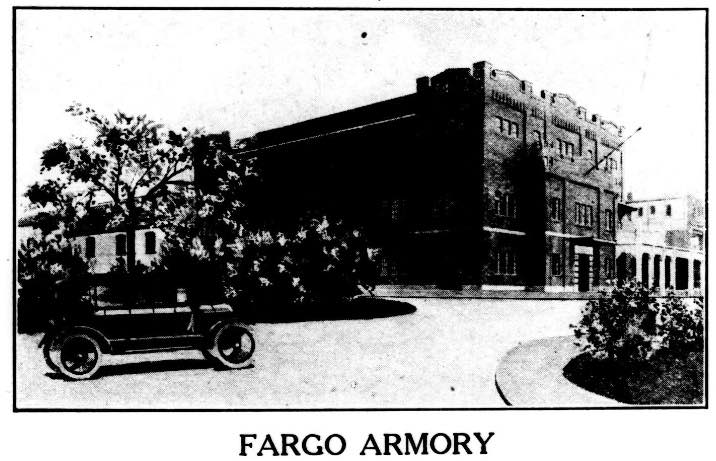
Murder in the early 1900s was just as brutal as it is today, as in the case of Marie Wick, a young woman murdered in Fargo, North Dakota.

The Crime Scene
Eighteen-year-old Marie Wick of Grygle, Minnesota had gotten off the train in Fargo, North Dakota and was going to spend the night at the Prescott Hotel. When she checked in, she asked to be woken up at 6 AM so that she could get ready for the train ride out of Fargo to visit her aunt.
On the morning of June 7, 1921, Marie’s body was found inside her room. She was gagged and tied down to the bed with the bed sheets and a blood stained pillow case. She had been raped, choked, and strangled.
The police were called to the scene and their initial search was thorough. The young woman had been bashed over the head repeatedly with some object and, after searching the bedroom, the police discovered the instrument of her ending.
The brass nozzle of a fire hose, kept in the hallway of the hotel, had been removed from the hose and used to bash the young woman over the head. After the crime was committed, the nozzle was placed back on the hose. Blood and hair was found on it, making them question who would go through the effort of removing the nozzle, committing murder with it, and then returning it to its place of origin. [2]

Blood Stained Trousers
A handful of potential witnesses and suspects were interviewed. One man who had slept in the room next to the girl offered up his fingerprints and asked to be physically searched. The man proved beyond a shadow of a doubt that he was not involved in the murder.
On June 13th, 6 days after the murder, the police found a pair of blood soaked pants at the foot of the basement stairs located at the back of the hotel. The pants had not been there on their original search.
With the trousers in hand and the curious case of the brass nozzle being returned to the hose in the hallway, police realized that the murder was committed by someone who worked at the hotel. [4]
William Gummer
One of the people the police interviewed immediately after the discovery of Marie’s body was William Gummer. Gummer, aged 22, was the night clerk for the hotel and claimed that he had been sleeping at the desk during the presumed time of the murder. At the time, it was a plausible answer.
From the start of the investigation, Gummer showed a lot of interest in what the police were doing. He was always eager to offer his assistance and had even suggested that Marie had staged her own suicide.
When questioned further, Gummer said Marie Wick asked to be woken up at 6 AM. When she did not answer the phone, Gummer took the key to her room and went inside it at 6:30 AM. He said he saw her body and was afraid he would be accused of murder. He went back to the front desk and said nothing about it until he saw the hotel owner’s son. Gummer told the owner’s son that Miss Wick would not answer the wake up calls and shortly after that he announced that he had found her dead body.
In spite of claiming innocence, the police arrested William Gummer and charged him with murder on June 15, 1921. [3]

Convicted
It was a lengthy trial and people filled the courtroom each day to hear the gory details.
William Gummer was found guilty by the jury. He was sentenced to life imprisonment in the Bismarck Penitentiary. Newspapers across the United States claimed that Gummer showed no emotion as the verdict was read out. By the time he was exiting the courtroom, he was smiling, and not an hour after the trial was over, Gummer was in his cell, napping. [1]
Pardon
While it would be nice to say that William Gummer was 100 percent guilty and deserved his sentence, he did maintain his innocence and refused to confess to the murder of Marie Wick.
With his lawyer’s help, he petitioned for a pardon a number of times, but was always turned down.
In 1934, three people came forward claiming that they knew who had actually killed Marie Wick. It was two men named Arthur James and Blackie Carter.
Arthur James was investigated and there was no evidence to prove he was anywhere near Fargo at the time of the murder.
As for Blackie Carter, he was located ten years later, in 1944. The States Attorney Ralph Croal found Blackie at a filling station and, after interviewing him, believed that Blackie had murdered Marie, not Gummer.
It was this discovery that led to William Gummer receiving his pardon 23 years after being convicted of murder. [5]

